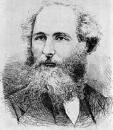- Problem 1 [10 points]
Using Dirac delta functions in the appropriate coordinate system, express the following charge distributions as three dimensional charge densities  (x).
(x).
a) In spherical coordinates, a charge Q uniformly distributed over a spherical shell of radius R.
b) In cylindrical coordinates, a charge  per unit length uniformly distributed over a cylindrical surface of radius b.
per unit length uniformly distributed over a cylindrical surface of radius b.
c) In cylindrical coordinates, a charge Q spread uniformly over a flat circular disc of negligible thickness and radius R.
d) The same as (c), but using spherical coordinates.
- Problem 2 [10 points]
The time average electrostatic potential of a neutral hydrogen atom is given by
where q is the magnitude of the electronic charge, and  -1=ao/2, with ao the Bohr radius. Find the distribution of charge (both continuous and discrete) which will give this potential, and interpret your result physically.
-1=ao/2, with ao the Bohr radius. Find the distribution of charge (both continuous and discrete) which will give this potential, and interpret your result physically.
- Problem 3 [10 points]
Prove this mean value theorem: For charge-free space, the value of the electrostatic potential at any point in space is equal to the average of the potential over the surface of any sphere centered on that point.
Hint: Use the fact that where there are no charges,  2
2 =0. Functions which satisfy this Laplace's equation are called harmonic functions; harmonic funtions obey the above mean value theorem.
=0. Functions which satisfy this Laplace's equation are called harmonic functions; harmonic funtions obey the above mean value theorem.
- Problem 4 [10 points]
A simple capacitor is a device formed by two insulated conductors adjacent to each other. If equal and opposite charges are placed on the conductors, there will be a certain difference of electrostatic potential between them. The ratio of the magnitude of the charge on one conductor to the magnitude of the potential difference is called the capacitance. Calculate the capcitance of:
a) two large, flat, conducting sheets of area A, separated by a small distance d (ignore effects at the boundaries of the sheets)
b) two concentric conducting spheres with radii a, b (b>a)
c) two concentric conducting cylinders of length L, large compared to their radii a, b (b>a) (ignore effects at the boundaries of the cylinders)
d) what are the units for capacitance in the CGS system? show how you get your answer!

